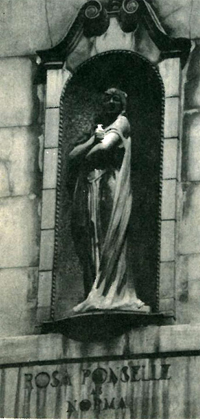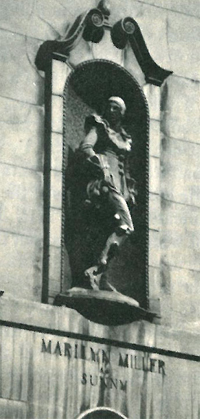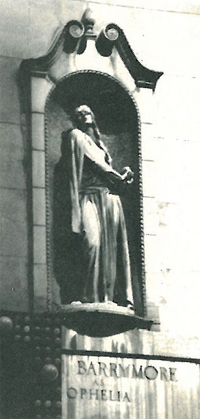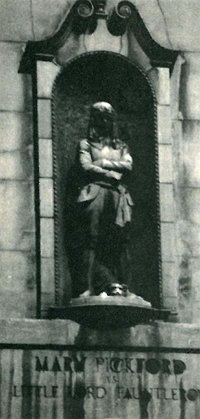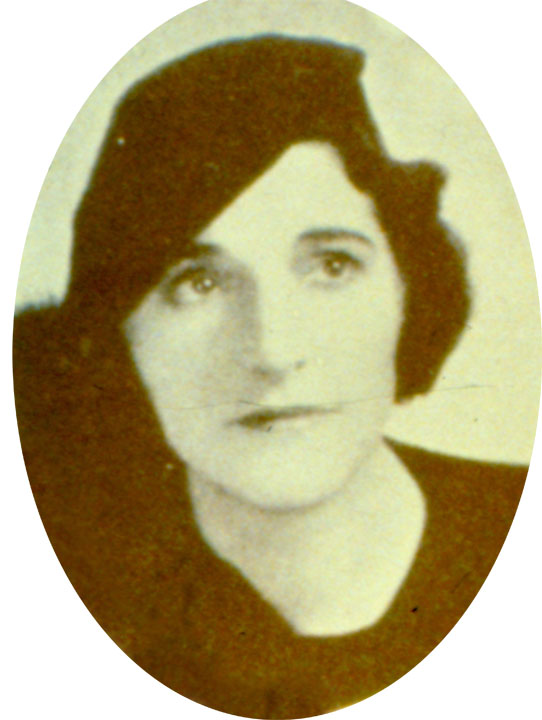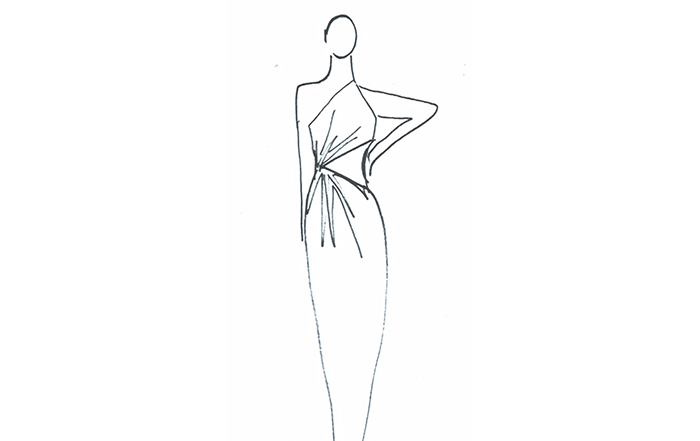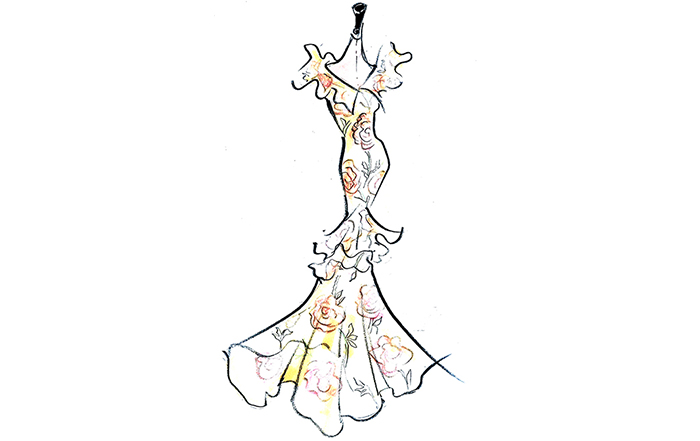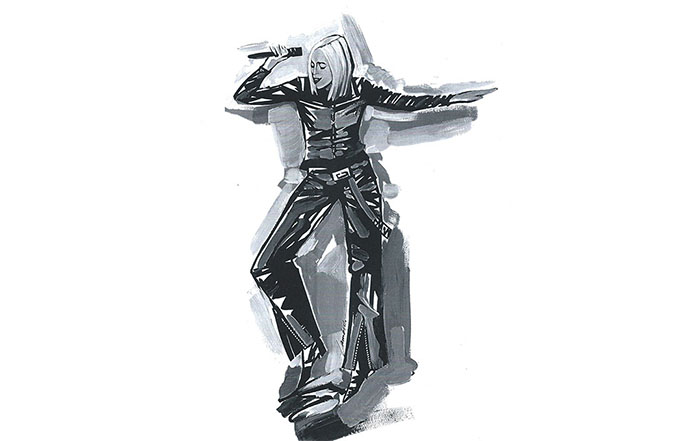 |
|||||
| SHOW BIZ TO SHOE BIZ | |||||
| Number 1552 Broadway – actually right off Broadway on the uptown side of West 46th Street – is a building that captures the attention of those interested in the annals of theatre, the importance of preservation, artists and their works , persons of legend. And shoes.
At the second story level, one sees, gazing out from their niches as they have for nearly a century, statues of four women, among the most acclaimed stars of their time in their most famous roles: Marilyn Miller as Sunny; Mary Pickford as Little Lord Fauntleroy; Ethel Barrymore as Ophelia and Rosa Ponselle as Norma. The statues were sculpted in 1929 by the noted artist, Alexander Stirling Calder, father of the equally noted sculptor and mobile artist, Alexander Calder. The building itself was, in 1999, designated an exterior landmark. And, to get to the shoe part, an inscription carved into the face of the building reads “I.Miller Building. The Showfolks Shoe Shop Dedicated to Beauty in Footwear.” |
|||||
|
|||||
| Israel Miller, a Polish shoemaker, who emigrated to New York by way of Paris, started a business making bespoke shoes for actresses, dancers and vaudevillians – the Dolly Sisters and Bill “Bojangles” Robinson among them . Enamored of their work shoes, the performers prevailed upon Mr. Miller to provide them with footwear for their private lives. The business prospered. Mr. Miller built factories. And retail stores. And a dynasty. Israel’s son, Jerry, followed in his father’s footsteps. As destiny would have it – as it so often does – Jerry’s namesake son, recently discharged from the military and hopeful of Georgetown and a career in the foreign service, made a prescient visit to the Long Island City factory; the defining “aha” moment. Miller went to work … in the design room, the leather room, in pre-fitting, heeling, sole-laying, bottom finishing; cut sock linings and heel covers. He went on the road, selling shoes for the I. Miller sub-divisions, Mademoiselle Shoes and the Carlisle Shoe Company sold shoes on the floor at Brooklyn’s long gone A&S department store, learning, along the way, everything there is to know about designing, crafting, marketing, buying and selling shoes.
For many years, the country’s predominant name in shoes, I. Miller, which includes in its illustrious history, the advertising campaign illustrated by Andy Warhol, was sold to Genesco in the 50s, shortly after, forever gone. Third generation Miller – flamboyant, eccentric, volatile, totally original Jerry Miller – ventured out on his own to become one of the most brilliant and illustrious names in the business; founder of Shoe Biz; respected and admired by the scores of designers and shoemakers with whom he worked in Italy, Spain, Brazil, France, Greece, the Philippines… wherever in the world shoes are made. Counted among his employees, partners, colleagues, friends and customers are some of the most iconic shoe names of all time: Walter Steiger, Vittorio Pollini, Mario Bologna, Moya Bowler, Natalino Pancaldi, Charles Jourdan, Renzo Rossetti, Charles and Mabel Julianelli, Beth and Herbert Levine, Arsho Bagsharian and Silvia Fiorentina whose shoes are like none other, immediately recognizable by their exquisite style and beautiful top and back lines. |
|||||
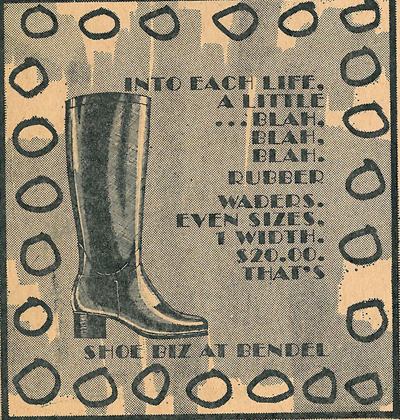 |
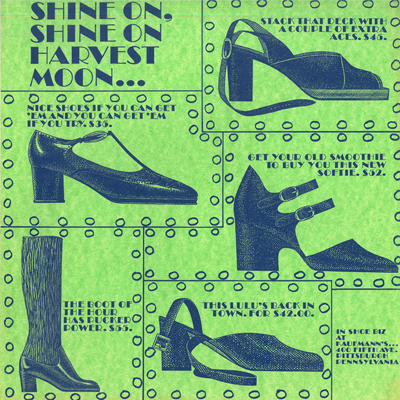 |
||||
| Starring in today’s arena of obsessed over, coveted and budget-busting shoes – some of which reside in their own zip code – there are many incredibly gifted designers whose creations fly off the shelves, inspire envy and win well deserved awards but, arguably, not many among them are actually crafters of heels, toe boxes and lasts; trained and experienced shoemakers in the truest sense of the word. | |||||
| Scrolling way, way back, while Jerry Miller was learning his trade in the I.Miller factories, he met and married Margaret Clark, a gifted young woman working in the design room there. A brilliant, prolific, directional designer, Margaret Clark is credited with a number of innovations that changed, forever, the way shoes were made; among them, replacing French cord bindings with the folded, straight topline that kept shoes – then and now – from digging into the backs of heels, creating uncomfortable and unsightly “pump bumps.” Much later, the two started a business together, designing, making and selling chic, elegant shoes – all the buzz in Vogue, Harper’s Bazaar and Footwear News and stocked by the most important retailers of the time.
One of the most rewarding and enduring partnerships between Margaret Jerrold and a retailer was that with Lord & Taylor. Originally the Millers called their company Margaret and Jerrold about which Dorothy Shaver, then president of Lord & Taylor, said “sounds like a dance team,” and the company became simply Margaret Jerrold. So successful was the association that, in 1982, the Lord & Taylor Fifth Avenue windows announced the Margaret Jerrold retrospective on view throughout the shoe salon. |
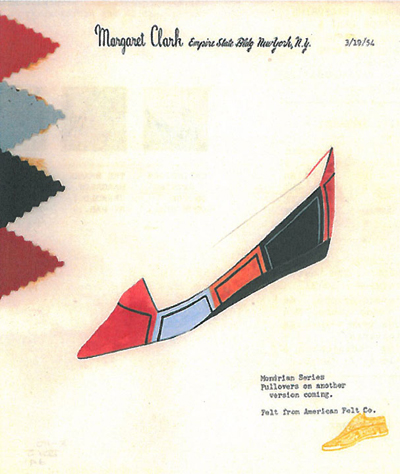 |
||||
|
|||||

